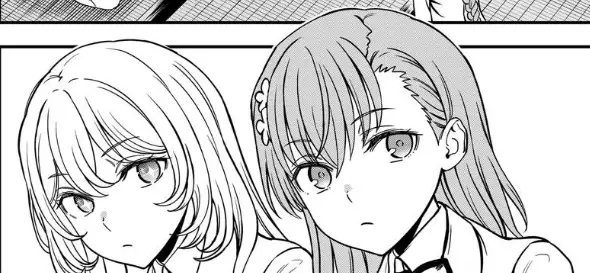Comic Newtype has announced that part two of Chapter 27 of the ongoing spinoff manga of A Certain Magical Index, A Certain Scientific Mental Out, is now available in Japanese for free.
A Certain Scientific Mental Out focuses on Misaki Shokuhou, the fifth-ranked Level 5 of Academy City, one of the franchise’s central locations, a hub of Espers. In this city, youths undergo the Power Curriculum Program, which allows them to gain supernatural abilities.
Of the roughly 2.3 million students who reside here, each is ranked from 0 through 5, with one’s Esper ability adequacy denoted by those rankings. Level 0s are mostly powerless, while Level 5s possess the power to rival world militaries.
Misaki’s ability is Mental Out, comprising various techniques to seize the human mind, such as mind control and reading people’s memories and thoughts. She attends Tokiwadai Middle School and is known as The Queen of Tokiwadai/Queen Bee because she possesses the largest clique and influence there. Further, she and Mikoto Misaka, the third-ranked Level 5 who attends the same academy, are seen as rivals.
Misaki plays a pivotal role in certain arcs throughout A Certain Scientific Railgun, and integral facets of her character are revealed in A Certain Magical Index New Testament, notably her history with franchise protagonist Touma Kamijou.
You can read part two of Chapter 27 of A Certain Scientific Mental Out via Comic Newtype’s official website.
Three volumes are currently available for purchase: chapters 1-6, 7-13, and 14-21, respectively.
The eleventh volume of A Certain Magical Index Genesis Testament is available in Japan.
A Certain Magical Index New Testament volume three is now available in the West.
